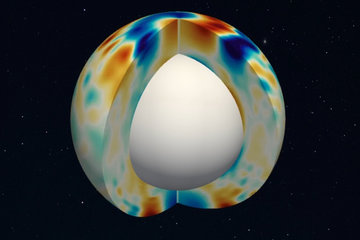All genres
161.
Poster
First results from combined EUI and SPICE observations of Lyman lines of Hydrogen and He II. 23rd EGU General Assembly, Online (2021)
162.
Poster
First Images and Initial In-Flight Performance of the Extreme Ultraviolet Imager On-Board Solar Orbiter. AGU Fall Meeting, Online (2020)
163.
Poster
Very high-resolution observations of the solar atmosphere in H I Lyman alpha and Fe IX-X at 17.4 nm as seen by EUI aboard Solar Orbiter. AGU Fall Meeting, Online (2020)
164.
Poster
First results from the EUI and SPICE observations of Alpha Leo near Solar Orbiter first perihelion. AGU Fall Meeting, Online (2020)
165.
Poster
First results from combined EUI and SPICE observations of Lyman lines of Hydrogen and He II. AGU Fall Meeting, Online (2020)
166.
Poster
Calibrating optical distortions in the Solar Orbiter SPICE spectrograph. AGU Fall Meeting, Online (2020)
167.
Poster
Optical performance of the Metis coronagraph on the Solar Orbiter ESA mission. International Conference on Space Optics - ICSO 2018 , Chania, Greece (2018)
168.
Poster
Comet ISON - From Craddle To Grave, The Approach Phase The Perihelion Passage. Frühjahrstagung der Deutschen Physikalischen Gesellschaft, Arbeitsgemeinschaft Extraterrestrische Forschung e.V., Berlin, Germany (2014)
169.
Poster
SUMER observations of comet 2012/S1 during perihelion. DPG Frühjahrstagung 2014, Berlin (2014)











